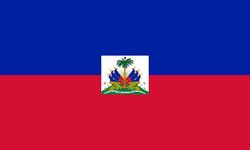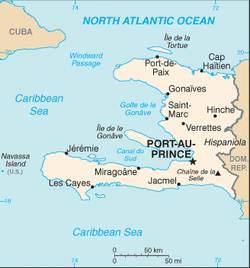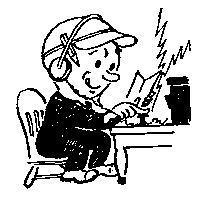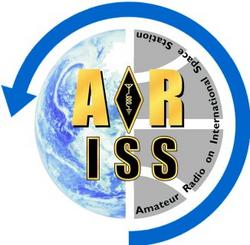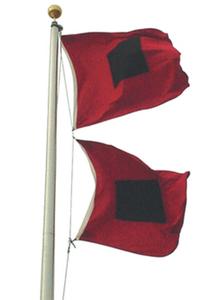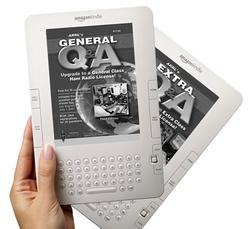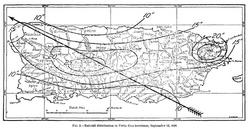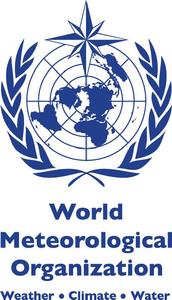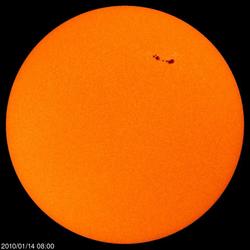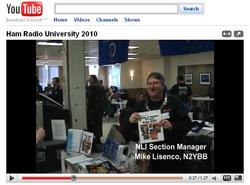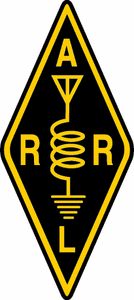 January 14, 2010 John E. Ross, KD8IDJ, Editor
| ||||||||||||||||
+ Available on ARRL Audio News Be on the lookout for the new ARRL Web site, coming soon to a computer near you! + Public Service: Haiti Earthquake: "It's Chaos, I'm Telling You -- It's Real Chaos"
On Tuesday, January 12 at 4:53 PM Haiti time (2153 UTC), a magnitude 7.0 earthquake hit 10 miles (15 kilometers) west of Port-au-Prince, the island nation's capital. Communications in and out of Haiti have been disrupted. The ARRL encourages US amateurs to be aware of the emergency operations on the following frequencies: 7.045 and 3.720 MHz (IARU Region 2 nets), 14.265, 7.265 and 3.977 MHz (SATERN nets), and 14.300 MHz (Intercontinental Assistance and Traffic Net); the International Radio Emergency Support Coalition (IRESC) is also active on EchoLink node 278173. There was no firm estimate on how many people were killed by Tuesday's quake. Haitian President Rene Preval said the toll could be in the thousands: "Let's say that it's too early to give a number." On Wednesday afternoon, Fred Moore, W3ZU, assisted Jean-Robert Gaillard, HH2JR, with a phone patch to his friend Ariel in Miami. "It's bad, it literally is bad," Gaillard told Ariel. "We don't know how many people are dead. We do not know what to expect. It's chaos, I'm telling you -- it's real chaos. We are really in a disaster area. It's really a war zone. Many, many buildings in the downtown area are stripped from the ground with many people buried underneath them - you name it, it's bad." Gaillard, who lives in Port-au-Prince, was using his neighbor's generator to make the contact. "It's really chaotic. I've never been in a war, but this is what a war zone would be like. Dead bodies all over the place, dead bodies buried. All I can tell you is that I'm okay, my house is okay. We've had 30 aftershocks, the main one yesterday. We are expecting some more shocks, so I'm a bit nervous to be inside the house."
"The scope of the disaster clearly shows that the response to this is going to be a long term effort," said ARRL Media and Public Relations Manager Allen Pitts, W1AGP. "The ARRL has been in contact with communications leaders of the American Red Cross and Salvation Army, as well as other key Amateur Radio operators throughout the region. As teams from the hundreds of responding agencies worldwide are formed for deployment, many will have Amateur Radio components. ARRL is committed to providing communications aid to our served agencies and working with the international community in this time of crisis. At this time there are no known requests from agencies for amateurs to travel to Haiti, but this can change. If it develops that there are ARES® assignments for a deployment in Haiti, these will be vetted and processed through each Section's Section Emergency Coordinators." Read more here. + ARRL Standing Committees Meet Prior to 2010 Annual Meeting
The ARRL Board of Directors holds its 2010 Annual Meeting this weekend -- January 15-16 in Windsor, Connecticut. Directors, Vice Directors and ARRL Board officers will be in attendance. The meeting will be preceded on Thursday, January 14 with meetings of the Administration and Finance Committee and the Programs and Services Committee. The Administration and Finance (A&F) Committee is chaired by Northwestern Division Director Jim Fenstermaker, K9JF. This committee studies, advises and makes recommendations for all administration and financial matters of the League, including recommending the annual budget to the Board, making recommendations in regard to staff management and monitoring investment of ARRL funds. The Programs and Services Committee (PSC), headed by Midwest Division Director Bruce Frahm, K0BJ, studies, advises and makes recommendations for all programs and services provided by the League, including operating activities and the Field Organization. Reports on the 2010 Annual Meeting will be available next week. Read more here. + ARRL On-the-Air: Warm Up with the ARRL January VHF Sweepstakes!
VHF weak-signal operators will be on the bands in force the weekend of January 23-25 as the ARRL January VHF Sweepstakes hits the airwaves. This contest gives the VHFer in all of us a chance to do some contesting during the winter months. ARRL Contest Branch Manager Sean Kutzko, KX9X said that January may not seem like the ideal time to hold a VHF+ contest: "After all, sporadic-E propagation is most commonly associated with summer months; however, the propagation gods like to surprise and confound, and there have been plenty of QSOs made via sporadic-E in the colder months through the years. Plenty of other chances for enhancement exist as well, thanks to tropospheric ducting and auroral propagation. Thanks to the advent of WSJT software, making QSOs via meteor scatter in the wee hours of the morning on 6 and 2 meters has never been easier. You have plenty of opportunities to make long-haul QSOs on the VHF+ bands in January!" Read more here. Amateur Radio in Space: ARISS Notes Record Number of ISS-to-School Contacts
When the Amateur Radio on the International Space Station (ARISS) program began coordinating ISS-to-school contacts in 2001, only one school -- Luther Burbank Elementary School in Burbank, Illinois -- participated. Ten years later, more than 120 schools participated in the ARISS program in 2009 alone. The number of ARISS-coordinated ISS-to-school contacts has climbed dramatically since that first contact in 2000. In 2001, there were 42 contacts, and in 2002, there were 40 contacts. During the first five years of the program -- 2000-2004 -- there was an average of 31.4 QSOs between the ISS and schools. In 2004, ARISS only conducted 35 contacts -- the lowest in its 10 year history -- but in 2005, 55 schools had contacted the ISS through the program. In 2006, there were 47 QSOs, 75 QSOs in 2007 and 62 in 2008. The 121 QSOs in 2009 show a jump of 95 percent over the 2008 numbers -- setting an ARISS record for the number of contacts. Read more here. + Public Service: NHC to Provide Greater Lead Time for Watches, Warnings
Beginning with the 2010 hurricane season, NOAA's National Hurricane Center in Miami will issue watches and warnings for tropical storms and hurricanes along threatened coastal areas 12 hours earlier than in previous years. According to NHC experts, advancements in track forecasts are making it possible for forecasters to provide greater lead time. Tropical storm watches will be issued when tropical storm conditions are possible along the coast within 48 hours. Tropical storm warnings will be issued when those conditions are expected within 36 hours. This is an increase of 12 hours from those issued in previous years. Hurricane season runs from May 15-November 30 in the Eastern Pacific and on June 1-November 30 for the Atlantic Basin. Read more here. + Focus on the FCC: FCC Seeks Public's Help in Reform Effort
According to its chairman, the Federal Communications Commission wants to change the way it is seen by the American public. In order to further that effort, on January 7, FCC Chairman Julius Genachowski announced that the Commission had launched a new Web site -- Reboot.FCC.gov-- saying it is the first-ever Web site dedicated to soliciting public input on ways to improve citizen interaction with the FCC, "creating a forum where the public can participate in improving the FCC." Read more here. ARRL Publications : Two League Publications Now Available for Kindle
In December 2009, the ARRL's Tech Q&A debuted on Amazon.com for use with Kindle wireless reading device. Now we are pleased to announce that the ARRL's General Q&A and the ARRL's Extra Q&A are now available directly from the online bookseller for use on the Kindle . Kindle is shaped much like a book with a paper-like screen that displays text and pictures. Those who have the Kindle application installed on their Apple iPhone or iPod touch -- or even on their computer -- can download the book for use on these devices. When you download the Tech Q&A, General Q&A and the Extra Q&A, you get access to these study tools quickly and easily, smoothing the path to your first -- or next! -- ham radio license. Studying on the Kindle is perfect for today's busy lifestyle, whether you're at home, in the office, traveling or just on the go. Each version of the Q&A lets you review questions and answers from that element's entire question pool so you can pass your exam. All three versions are available for purchase from Amazon.com for $9.99 each. + Now You Know!: Hurricane Names By ARRL News Editor S. Khrystyne Keane, K1SFA
For several hundred years, many hurricanes in the West Indies were named after the particular saint's day on which the hurricane occurred: In his 1938 book Hurricanes, Ivan R. Tannehill describes the major tropical storms of recorded history and mentions many hurricanes that were named after saints. On July 26, 1825, Hurricane Santa Ana struck Puerto Rico with exceptional violence. Hurricane San Felipe (the first) and Hurricane San Felipe (the second) also hit Puerto Rico on September 13 in both 1876 and 1928. During World War II, the practice of giving hurricanes women's names became widespread in weather map discussions among forecasters, especially Air Force and Navy meteorologists who plotted the movements of storms over the wide expanses of the Pacific Ocean. In 1953, the United States abandoned a confusing two year old plan to name storms by the phonetic alphabet in use at the time (Able, Baker, Charlie and so on) when a new, international phonetic alphabet was introduced. That year, the United States began using female names for storms. The practice of naming hurricanes solely after women came to an end in 1978 when men's and women's names were included in the Eastern North Pacific storm lists. In 1979, male and female names were included in lists for the Atlantic and Gulf of Mexico.
Since 1953, Atlantic tropical storms have been named from lists originated by the National Hurricane Center (NHC). They are now maintained and updated by an international committee of the World Meteorological Organization (WMO). There are six lists of hurricane names and they are used in rotation. This means that the 2010 list will be used again in 2016. According to the NHC, the only time that there is a change in the list is if a storm is so deadly or costly that the future use of its name on a different storm would be inappropriate for reasons of sensitivity such as 2005's Hurricane Katrina). If that occurs, the offending name is stricken from the list and another name is selected to replace it at the WMO annual meeting. Check out the list of retired names on the NHC Web site. Several names have been changed since the lists were created. For example, on the 2007 list (which will be used again in 2013), Dorian has replaced Dean, Fernand has replaced Felix and Nestor has replaced Noel. For 2010, Colin replaced Charley, Fiona replaced by Frances, Igor replaced by Ivan and Julia replaced by Jeanne. Before 1979 -- when the first permanent six-year storm name list began -- some storm names were simply not used anymore. For example, in 1966, "Fern" was substituted for "Frieda," and no reason was cited. There are only 22 names on each list since the WMO does not use names that begin with Q, U, Y or Z. The names for 2010 are Alex, Bonnie, Colin, Danielle, Earl, Fiona, Gaston, Hermine, Igor, Julia, Karl, Lisa, Matthew, Nicole, Otto, Paula, Richard, Shary, Thomas, Virginie and Walter. In the event that more than 21 named tropical cyclones occur in the Atlantic basin in a season, additional storms will take names from the Greek alphabet: Alpha, Beta, Gamma, Delta and so on. If a storm forms in the off-season, it will take the next name in the list based on the current calendar date. For example, if a tropical cyclone formed on December 28, it would take the name from the previous season's list of names. If a storm formed in February, it would be named from the subsequent season's list of names. You can find lists of names for storms on the NHC Web site for every region of the globe, including the Eastern North, Central North and Western North regions of the Pacific Ocean, Australia, Fiji, Papua New Guinea, the Philippines and the Northern and Southwest portions of the Indian Ocean. Now you know! Solar Update
Tad "Blinded alike from sunshine and from rain" Cook, K7RA, reports: Recent growing sunspot activity remains strong. Weekly averages of daily sunspot numbers over the nine weeks from November 12-January 13 were 9, 12.6, 0, 1.9, 21.1, 31.4, 21.9, 14.6 and 26.4. Sunspot region 1035 re-emerged as region 1040 on January 7 and his grown steadily. For January 7-13, the total area of region 1040 -- as expressed in millionths of a solar hemisphere -- was 80, 40, 70, 130, 300, 300 and 380. It has passed the 0 degree meridian (the imaginary vertical line on the visible Sun that faces straight toward Earth), but looks as if it has perhaps another 5 or 6 days before it crosses the Sun's western horizon. Look for more information in the Solar Update, available on the ARRL Web site on Friday, January 15. For more information concerning radio propagation, visit the ARRL Technical Information Service Propagation page. This week's "Tad Cookism" brought to you by John Keats' The Eve of St Agnes. + In the Workshop: Deadline for Second Homebrew Challenge Approaching All entries for the Second ARRL Homebrew Challenge must be received in the ARRL Lab no later than close of business on February 28, 2010. Since that is a Sunday, the judges will accept entries arriving with the first mail delivery on Monday, March 1, 2010. In 2006, the ARRL sponsored a successful competition for a 5 W, 40 meter voice/CW transceiver that could be built for $50. This second Homebrew Challenge offers an opportunity to boost that power to 50 W with an amplifier built from no more than $125 of parts. Rules, subsequent requests for clarification and responses, as well as a list of prizes, can be found on the ARRL Homebrew Challenge Web page. This Week on the Radio
This week, there is a running of the NCCC Sprint on January 15. The Hungarian DX Contest and the North American QSO Party (SSB) are January 16-17. The Feld Hell Sprint is January 17, the Run for the Bacon QRP Contest is January 18 and the NAQCC Straight Key/Bug Sprint is January 21. Next week, be sure to check out the ARRL January VHF Sweepstakes on January 23-25. On January 22, there is another running of the NCCC Sprint. Look for the YL-ISSB QSO Party (SSB), the MIE 33 Contest and the BARTG RTTY Sprint on January 23-24. The SKCC Sprint is January 27. All dates, unless otherwise stated, are UTC. See the ARRL Contest Branch page, the ARRL Contest Update and the WA7BNM Contest Calendar for more info. Looking for a Special Event station? Be sure to check out the ARRL Special Event Station Web page. ARRL Staff Vacancy
ARRL is soliciting applications to fill the HQ position of Emergency Preparedness and Response Manager. The person in this position will develop and maintain ARRL's Emergency Communications and Emergency Preparedness functions, both internally and externally. Candidate review by the hiring committee will begin in mid-January. Please see ARRL Web site for application information and job requirements. The ARRL Contest Update Sees Circulation Milestone
The December 23 and January 6 issues of the ARRL Contest Update newsletter cracked another barrier with more than 25,000 subscribers. Containing material that goes beyond straight contest reporting, subscribers to the Contest Update find it full of all types of useful material. The newsletter -- available free to ARRL members and published every two weeks by e-mail or Web access -- got its start as a modest text-only bulletin in March 2002. Having expanded its coverage to topics of interest to any active ham, the newsletter's byline and mission became "News and Techniques for the Active Operator" in 2008 as it pioneered the ARRL's graphic newsletter format. A typical newsletter contains news and human interest stories, press releases about new products for hams, photos and links to multimedia content, an editorial segment, a big section of technical items that any ham can put to work -- and even a chuckle or two. You will also find contest results from your state's QSO party, as well as a calendar of upcoming contests and due dates for contest logs. Why not give the newsletter a try? Back issues are available online. To sign up for free delivery, log in to the ARRL Web site with your call sign and password, then click "Member Data page" and "Modify membership data." At the bottom of the page, click the box next to "ARRL Contest Update (biweekly contest newsletter)" and you're ready to read! ARRL Continuing Education Course Registration
Registration remains open through Sunday, January 24, 2010, for these online course sessions beginning on Friday, February 10, 2010: Amateur Radio Emergency Communications Level 1; Antenna Modeling; Radio Frequency Interference; Antenna Design and Construction; Ham Radio (Technician) License Course; Propagation; Analog Electronics, and Digital Electronics. To learn more, visit the CEP Course Listing page or contact the Continuing Education Program Coordinator. | ||||||||||||||||
